Year 4
The English curriculum is built around the three interrelated strands of language, literature and literacy. Teaching and learning programs should balance and integrate all three strands. Together, the strands focus on developing students' knowledge, understanding and skills in listening, reading, viewing, speaking, writing and creating. Learning in English builds on concepts, skills and processes developed in earlier years, and teachers will revisit and strengthen these as needed.
In Years 3 and 4, students experience learning in familiar contexts and a range of contexts that relate to study in other areas of the curriculum. They interact with peers and teachers from other classes and schools in a range of face-to-face and online/virtual environments.
Students engage with a variety of texts for enjoyment. They listen to, read, view and interpret spoken, written and multimodal texts in which the primary purpose is aesthetic, as well as texts designed to inform and persuade. These encompass traditional oral texts including Aboriginal stories, picture books, various types of print and digital texts, simple chapter books, rhyming verse, poetry, non-fiction, film, multimodal texts, dramatic performances and texts used by students as models for constructing their own work.
The range of literary texts for Foundation to Year 10 comprises Australian literature, including the oral narrative traditions of Aboriginal and Torres Strait Islander Peoples, as well as the contemporary literature of these two cultural groups, and classic and contemporary world literature, including texts from and about Asia.
Literary texts that support and extend students in Years 3 and 4 as independent readers describe complex sequences of events that extend over several pages and involve unusual happenings within a framework of familiar experiences. Informative texts include content of increasing complexity and technicality about topics of interest and topics being studied in other areas of the curriculum. These texts use complex language features, including varied sentence structures, some unfamiliar vocabulary, a significant number of high-frequency sight words and words that need to be decoded phonically, and a variety of punctuation conventions, as well as illustrations and diagrams that support and extend the printed text.
Students create a range of imaginative, informative and persuasive types of texts including narratives, procedures, performances, reports, reviews, poetry and expositions.
(source: www.australiancurriculum.edu.au)
Achievement Standard
Receptive modes (listening, reading and viewing)
By the end of Year 4, students understand that texts have different text structures depending on purpose and context. They explain how language features, images and vocabulary are used to engage the interest of audiences. They describe literal and implied meaning connecting ideas in different textsÂ
They fluently read texts that include varied sentence structures, unfamiliar vocabulary including multisyllabic words. They express preferences for particular types of texts, and respond to others' viewpoints. They listen for and share key points in discussions.
Productive modes (speaking, writing and creating)
Students use language features to create coherence and add detail to their texts. They understand how to express an opinion based on information in a text. They create texts that show understanding of how images and detail can be used to extend key ideas.
Students create structured texts to explain ideas for different audiences. They make presentations and contribute actively to class and group discussions, varying language according to context. They demonstrate understanding of grammar, select vocabulary from a range of resources and use accurate spelling and punctuation, re-reading and editing their work to improve meaning.
(source: www.australiancurriculum.edu.au)
- Plus Plan
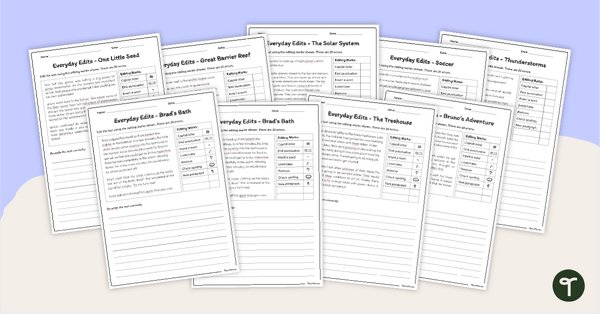
18 Editing and Proofreading Worksheets – Spelling, Grammar and Punctuation
Use these editing and proofreading worksheets to add daily editing practice to your lesson plans.
- Plus Plan
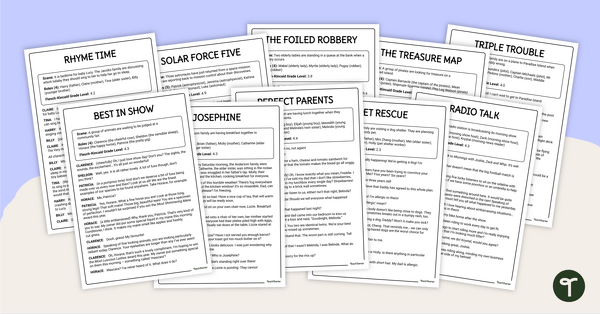
Scripts for Readers Theatre – Year 3 and Year 4
Bring your literacy lessons to life with scripts for readers theatre that boost student confidence and improve reading fluency.
- Plus Plan
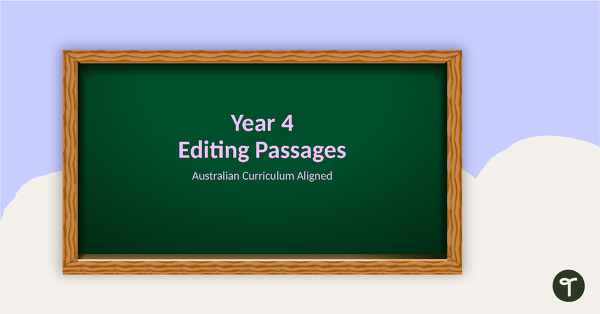
Year 4 Editing Passages
Use this set of Year 4 editing passages to help your students demonstrate their spelling, punctuation and grammar knowledge.
- Plus Plan
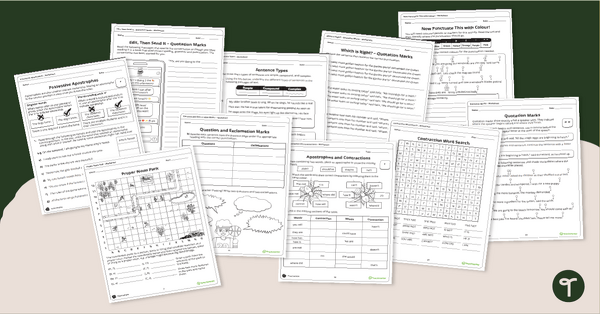
Perfect Punctuation Sheets – Booklet (3-5)
Use our Punctuation activity sheet booklet with 50 punctuation activities to practice a variety of grammar skills in the upper years classroom.
- Free Plan
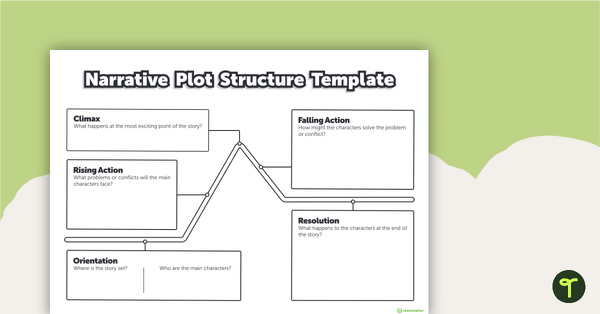
Narrative Plot Structure - Story Mountain Template
Use a story mountain template to help your students write narrative texts.
- Plus Plan
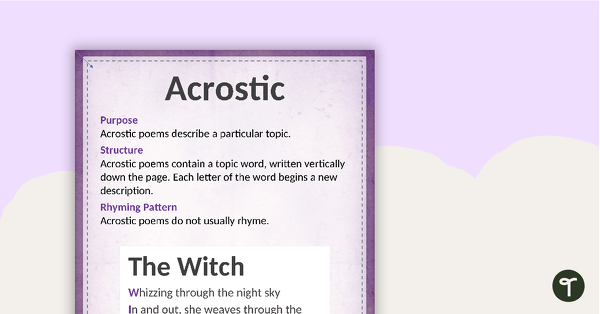
Types of Poetry Posters with Annotations
Use this set of 9 annotated posters when introducing structured forms of poetry to your students.
- Free Plan
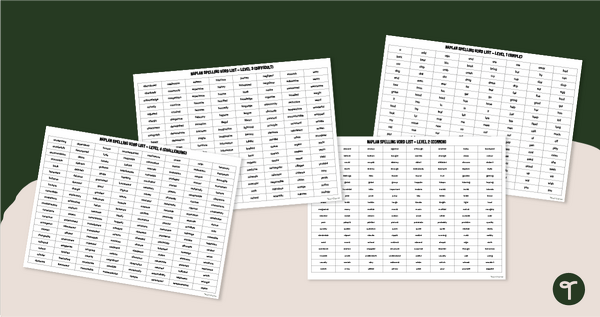
NAPLAN Spelling Reference List
Prepare your students for NAPLAN Language Conventions assessments with a printable NAPLAN Spelling Reference List.
- Plus Plan
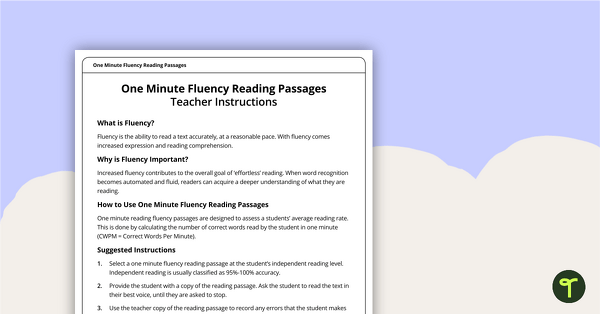
Year 4 Reading Fluency Passages
Assess student fluency with a printable pack of Year 4 reading fluency passages.
- Plus Plan
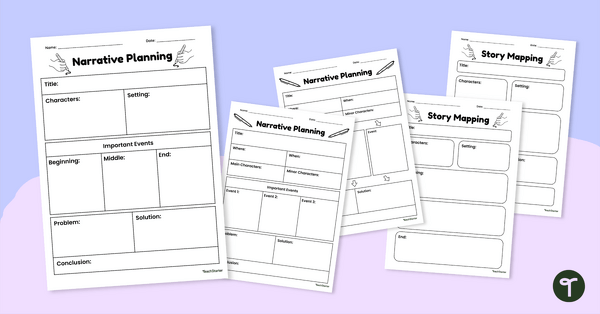
Narrative Writing Planning Template Pack
Use this narrative writing planning template pack to help your students plan a fantastic piece of writing!
- Plus Plan
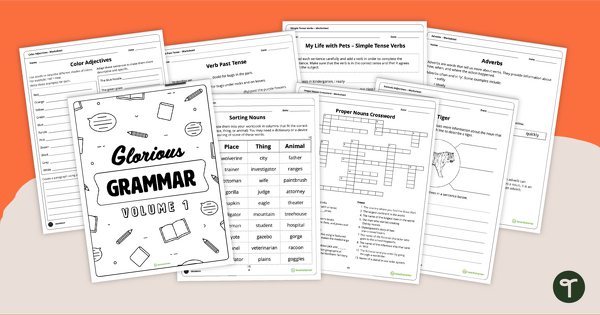
Glorious Grammar Volume 1 - Worksheet Book
50 activities in one booklet which all revolve around learning grammar in the classroom.
- Free Plan
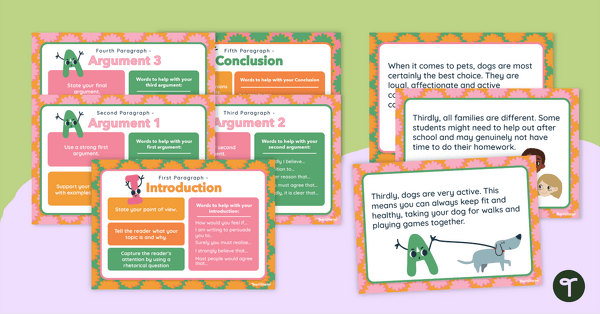
Persuasive Text Structure Posters
Explore the structure of persuasive writing with this set of 15 posters.
- Plus Plan
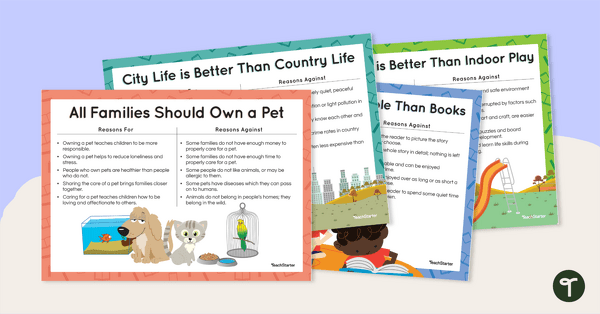
Persuasive Text Writing Prompts - Complete Set
A set of 5 persuasive writing prompts, covering a variety of topics.
- Free Plan
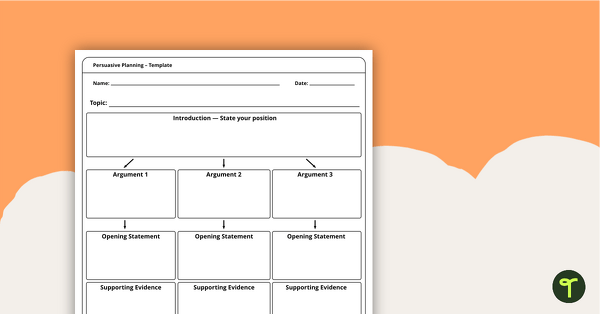
Persuasive Planning Template
A planning template to assist students in writing a well-structured persuasive text.
- Plus Plan
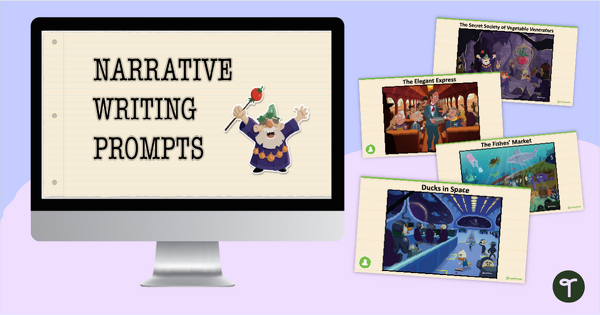
Narrative Writing Visual Prompts Presentation
A 19 slide teaching presentation containing visual narrative writing prompts.
- Free Plan
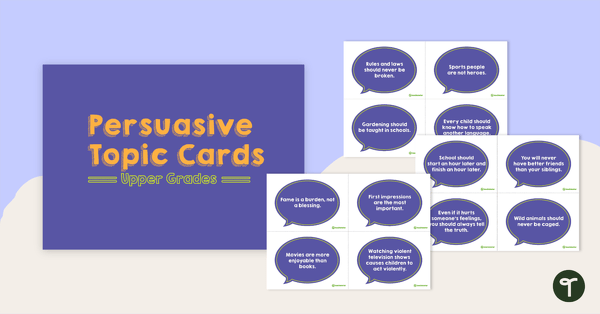
Persuasive Topic Cards - Upper Grades
A set of persuasive topic cards for upper primary.
- Free Plan
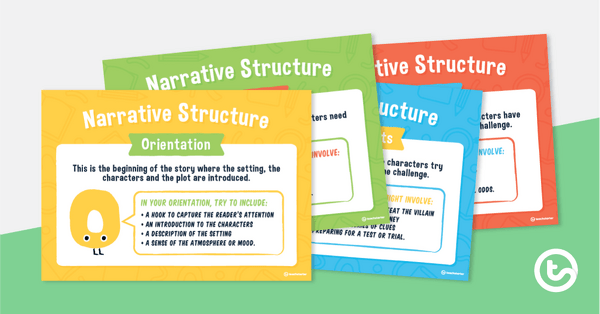
Narrative Text Structure Posters
A set of 8 narrative text structure posters to add to your classroom narrative writing display.
- Plus Plan
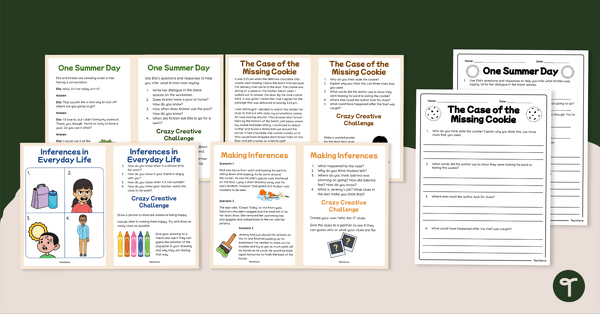
Drawing Conclusions and Making Inferences – Comprehension Task Cards
A set of comprehension task cards to help students draw conclusions and make inferences when reading.
- Plus Plan
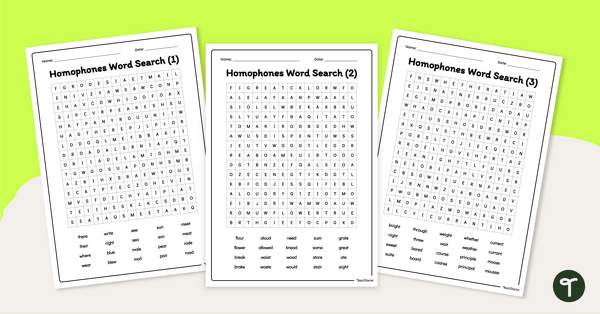
Homophones Word Searches
Immerse your students in common homophones with this differentiated set of homophones word searches for your vocabulary lessons.
- Plus Plan
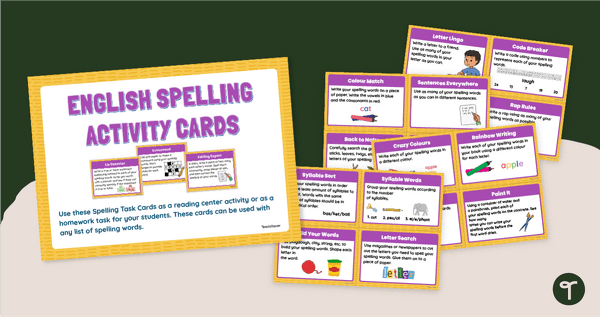
English Spelling Practice Activity Cards
Make English spelling practice more exciting with this set of 24 spelling activity task cards.
- Plus Plan
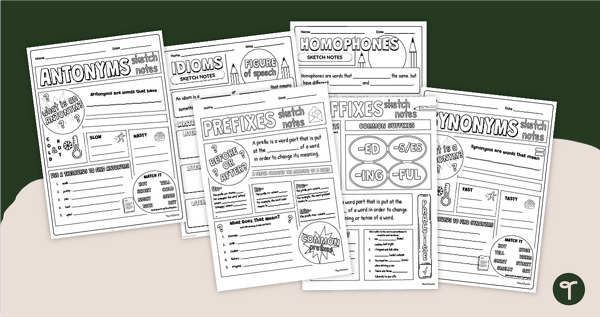
Vocabulary Sketch Notes Template Pack
Review a variety of vocabulary skills and help your students build note-taking skills with our printable Vocabulary Sketch Notes Template Pack.
- Plus Plan
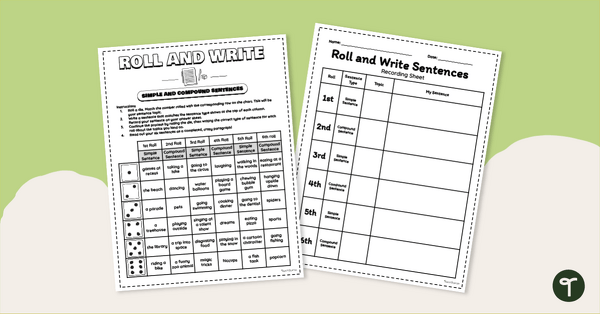
Simple and Compound - Roll a Sentence Dice Game
Play a ‘Roll-a-Sentence’ dice game to help your students practise writing simple and compound sentences.
- Free Plan
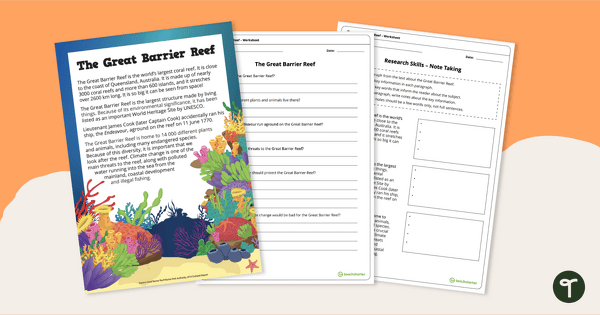
Great Barrier Reef Comprehension and Note Taking Worksheet
Learn about The Great Barrier Reef with a reading comprehension and note-taking activity.
- Plus Plan
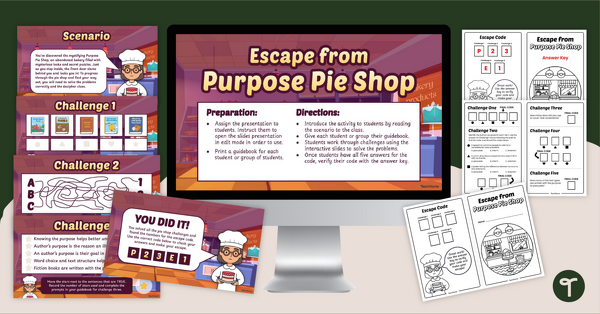
What is the Author's Purpose? Escape Room
Get your students excited to practise understanding what is the author’s purpose with this engaging escape room activity.
- Plus Plan
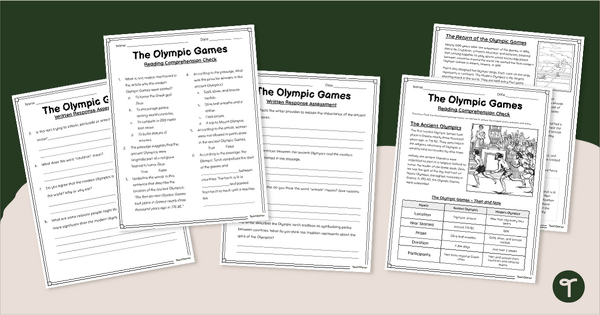
The Olympic Games - Comprehension Task
Encourage students to apply a range of comprehension and writing skills when finding out interesting fun facts about the Olympics with a printable reading comprehension task.
- Plus Plan
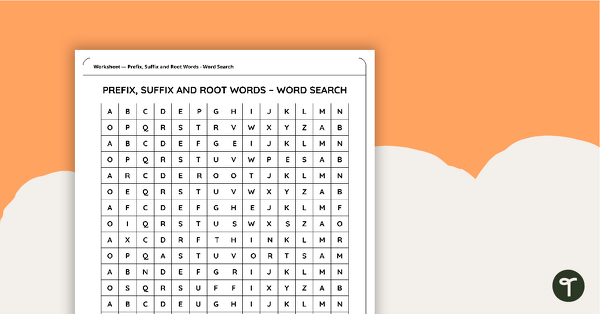
Prefix, Suffix and Root Words Word Search
Identify terminology related to prefixes, suffixes and root words in this word search.
- Plus Plan
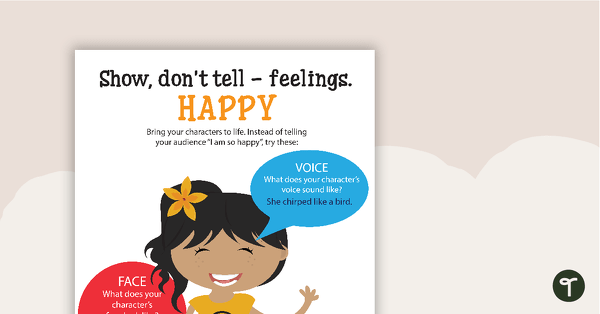
Show Don’t Tell Posters – Character Feelings
Use this set of Show, Don’t Tell posters to help your students describe character emotions through vivid details instead of simple statements.
- Plus Plan
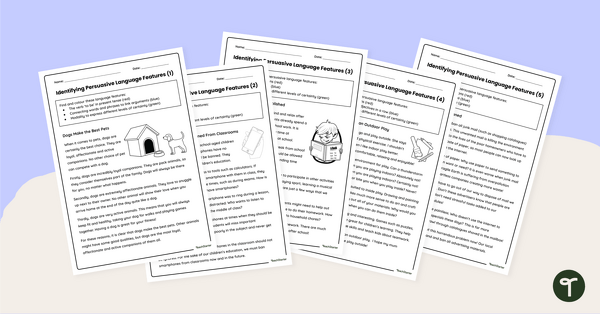
Identifying Persuasive Language Worksheets
Explore persuasive language with your students using this set of five persuasive texts on a variety of age-appropriate topics.
- Plus Plan
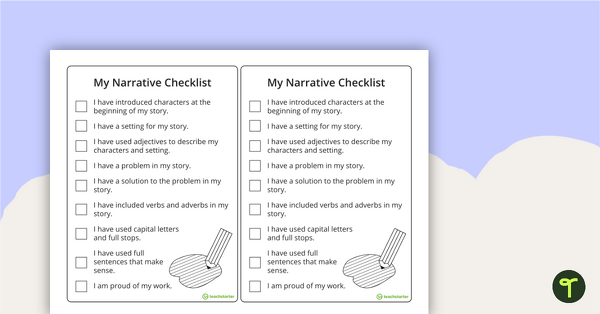
Narrative Writing Checklist Pack
Use this narrative checklist pack when teaching your students how to edit their narrative writing.
- Plus Plan
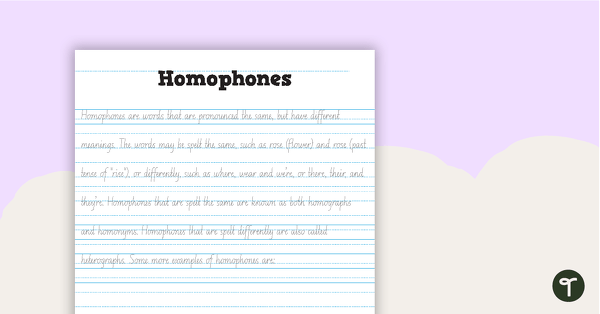
Cursive Handwriting Fluency Sheets
Fifteen handwriting sheets for upper primary.
- Plus Plan
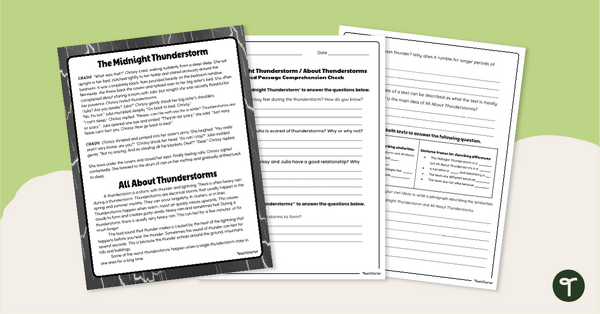
Paired Passage Worksheets - Thunderstorms
Use paired passages to help your student practise applying reading comprehension strategies.
- Free Plan
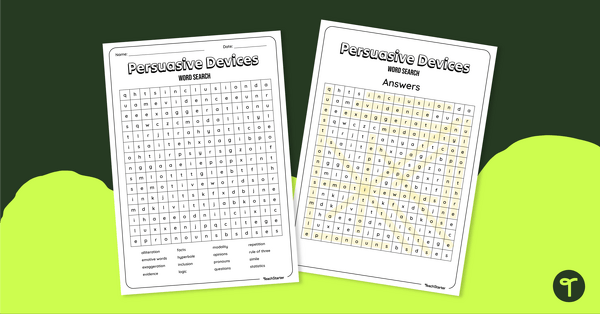
Persuasive Devices Word Search
Familiarise your students with the most common persuasive devices with a fun word search.
- Plus Plan
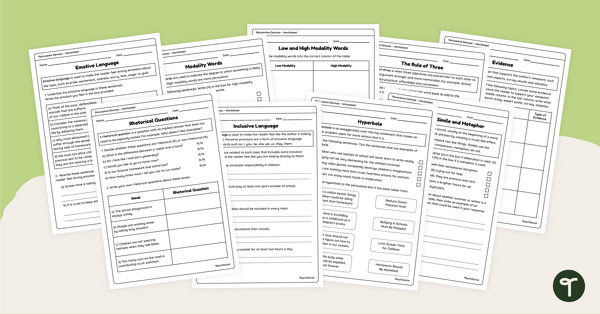
Persuasive Devices Worksheet Pack
Explore persuasive language techniques with your students using this nine-page worksheet pack perfect for your persuasive writing unit.